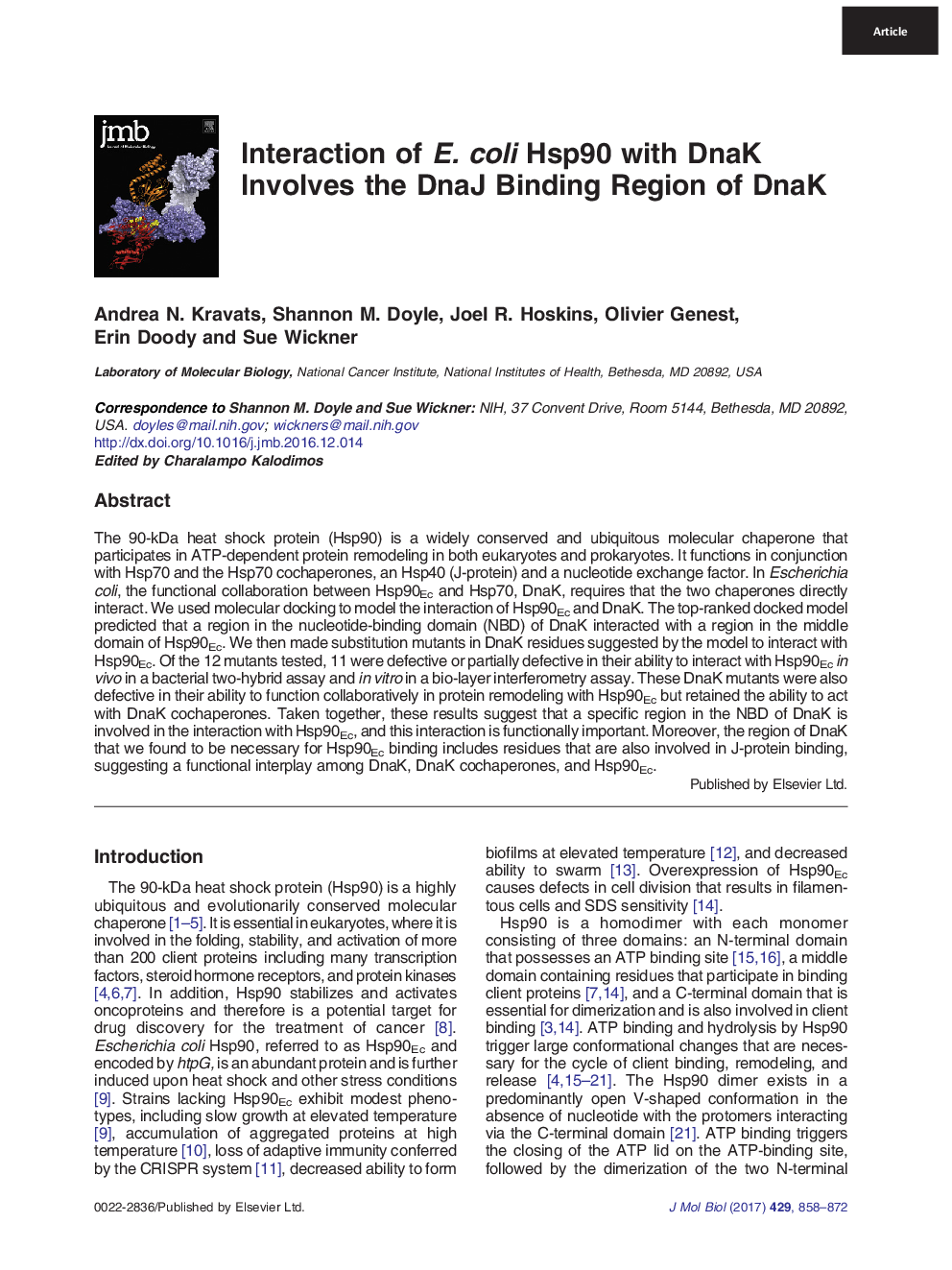| کد مقاله | کد نشریه | سال انتشار | مقاله انگلیسی | نسخه تمام متن |
|---|---|---|---|---|
| 5533175 | 1402105 | 2017 | 15 صفحه PDF | دانلود رایگان |

- Molecular docking predicts that Hsp90Ec interacts with the ADP conformation of DnaK.
- The predicted Hsp90Ec interacting region is in the DnaK NBD.
- Many predicted Hsp90Ec interacting residues on DnaK are involved in DnaJ binding.
- Substitutions in predicted DnaK residues cause defects in the interaction with Hsp90Ec.
- The DnaK mutants are defective in collaboration with Hsp90Ec in protein remodeling.
The 90-kDa heat shock protein (Hsp90) is a widely conserved and ubiquitous molecular chaperone that participates in ATP-dependent protein remodeling in both eukaryotes and prokaryotes. It functions in conjunction with Hsp70 and the Hsp70 cochaperones, an Hsp40 (J-protein) and a nucleotide exchange factor. In Escherichia coli, the functional collaboration between Hsp90Ec and Hsp70, DnaK, requires that the two chaperones directly interact. We used molecular docking to model the interaction of Hsp90Ec and DnaK. The top-ranked docked model predicted that a region in the nucleotide-binding domain (NBD) of DnaK interacted with a region in the middle domain of Hsp90Ec. We then made substitution mutants in DnaK residues suggested by the model to interact with Hsp90Ec. Of the 12 mutants tested, 11 were defective or partially defective in their ability to interact with Hsp90Ecin vivo in a bacterial two-hybrid assay and in vitro in a bio-layer interferometry assay. These DnaK mutants were also defective in their ability to function collaboratively in protein remodeling with Hsp90Ec but retained the ability to act with DnaK cochaperones. Taken together, these results suggest that a specific region in the NBD of DnaK is involved in the interaction with Hsp90Ec, and this interaction is functionally important. Moreover, the region of DnaK that we found to be necessary for Hsp90Ec binding includes residues that are also involved in J-protein binding, suggesting a functional interplay among DnaK, DnaK cochaperones, and Hsp90Ec.
Graphical Abstract154
Journal: Journal of Molecular Biology - Volume 429, Issue 6, 24 March 2017, Pages 858-872